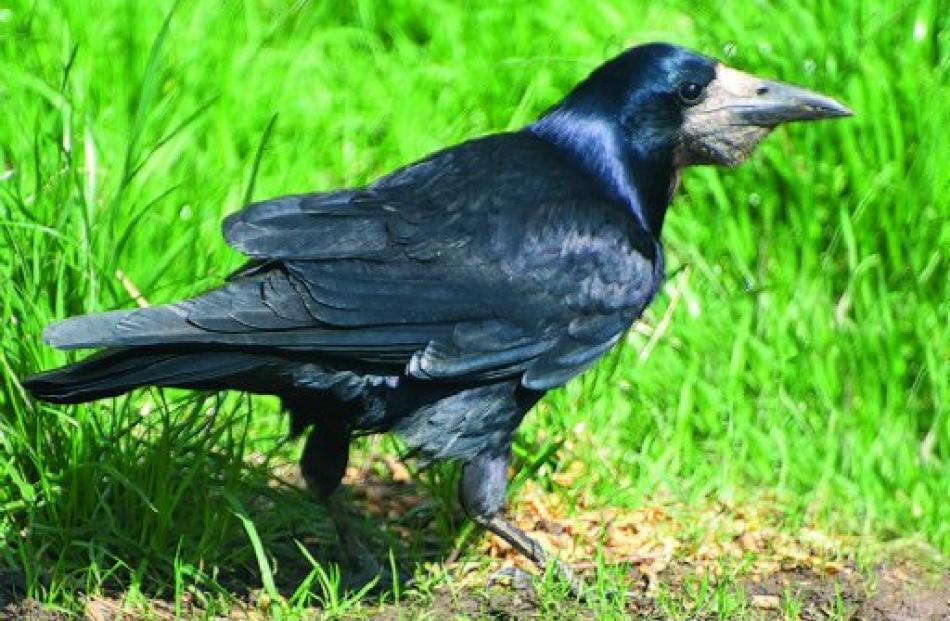Rook season is upon us and Environment Southland and the Otago Regional Council (ORC) are joining forces to hunt for the pest.
Rooks are considered a pest because of the extensive damage they can cause to crops and new grass, and spring is the best time to spot them because it is when they nest.
They are larger than magpies and completely black, and their feathers often have a purple or bluish-purple sheen in bright light.
Both the ORC and Environment Southland are asking the community to keep an eye out for rooks and to report any sightings.
Environment Southland senior biosecurity officer for pest animals Dave Burgess said there had not been an established rook population in Southland for several years.
''For the last four to five years we have had confirmed reports of a group of four to six rooks in the Pukerau to Kaiwera area.''
These rooks tended to come and go, looking for food and nesting sites, but it was likely they then shifted back to the Otago side of the border, Mr Burgess said.
''We also receive a few unconfirmed reports each year from throughout Southland, but we have not been able to identify any breeding sites.''
ORC environmental monitoring and operations director Scott MacLean said the ORC's pest control programme had reduced rook numbers from hundreds at their peak to about 40.
Mr MacLean said he suspected there was no longer a breeding population in Otago either, as no chicks had been reported in the past five years.
The ORC inspects historic nesting locations every year, including in the Maniototo, Strath Taieri, Middlemarch and South Otago around Clinton and Clydevale.
Mr MacLean asks people to be the eyes and ears on the ground for the ORC.
''We rely on help from the community to contact us if they see any rooks or nesting sites between now and November,'' he said.
''We ask that people don't shoot at or scare the rooks themselves because there is often only one chance to deal with them, and if they get a fright they can scatter and form new rookeries.''
A video available on the Environment Southland website (www.es.govt.nz) can be useful in helping identify rooks, as they have a distinctive sound.
People who see rooks in Otago are asked to contact ORC environmental officer Malcolm Allan on 027-278-8498 or the ORC at 0800-474-082 or info@orc.govt.nz.
Rook sightings in Southland should be reported to the biosecurity team at Environment Southland on 0800-768-845 or service@es.govt.nz.


